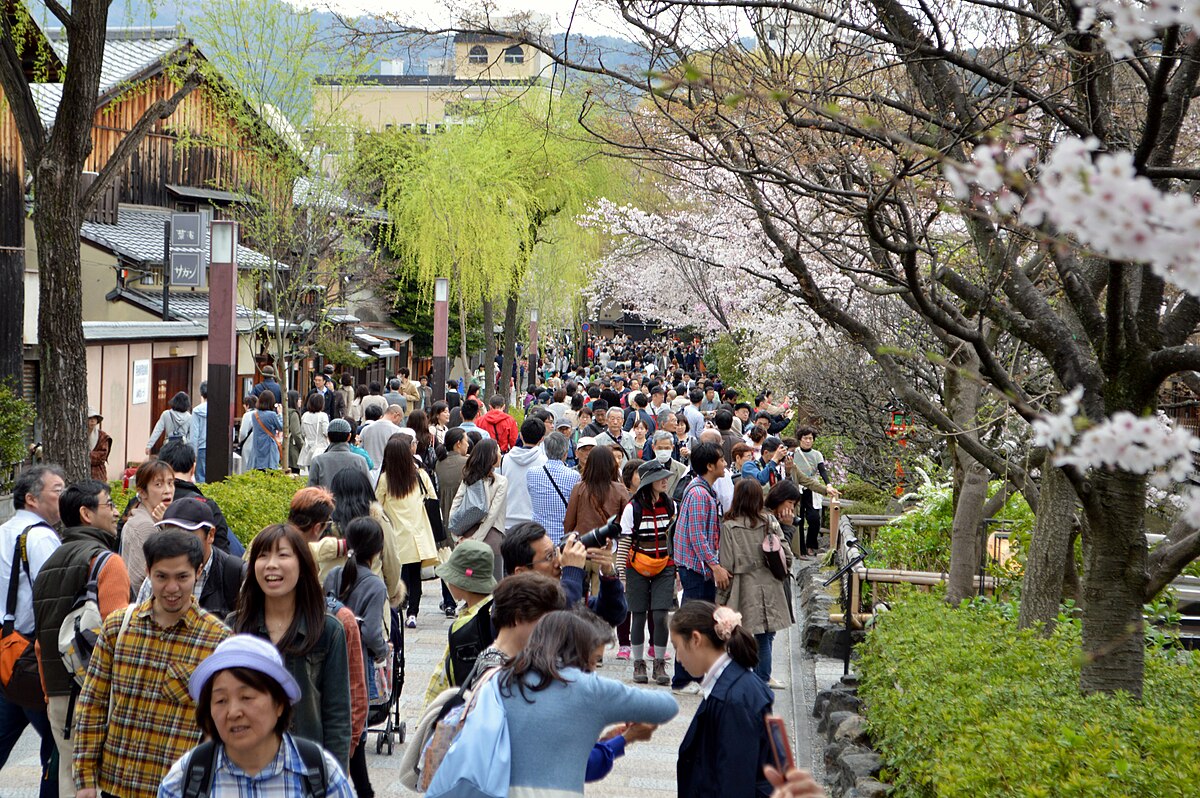Staff writer Milli Sloss analyses the growing attempts to crack down on tourism in global hotspots such as Kyoto, Seoul and Barcelona and the impacts its industry has on local populations.
Due to increased global interconnectivity the world has become a lot more accessible. Cheap airlines have facilitated the rise in international tourism allowing people to access foreign destinations easier than ever before. Tourism has had many positive effects, connecting people with different cultures, communities and helping local economies flourish.
However, disruption to local livelihoods, antisocial behaviour and increased living costs have put into question the real benefits of tourism for the locals. In recent months many popular destinations such as Kyoto, Seoul and Barcelona have shown resistance against their increased influxes of tourism. This article aims to analyse the impacts of tourists and understand the issues faced by locals.
Tourism restrictions in Kyoto
After the pandemic, Japan has been continuously facing an issue with over-tourism. One of the areas in particular being Kyoto, which has become increasingly popular for its traditional cityscapes and cultural activities seen in Japanese dramas and on social media platforms.
Due to antisocial behaviour and vast numbers of tourists, early this year the local authorities decided to close off parts of the Gion district where the livelihoods of geikos and maikos are centred. Geikos are professional entertainers trained in traditional Japanese arts who attend guests at occasions such as meals and banquets. Whilst they can be found across the country, the former capital city Kyoto is known to be the most prestigious place to experience geisha.
The residents say that ‘their neighbourhood is not a theme park’ and that the tourists fail to understand that the geiko and maikos are not there to cater for tourism and unsolicited photography.
A news report by KTV News shows how narrow the city roads are, and the effects of large tourist groups which pass these areas. In the clip, a bike tour passes through the narrow street which is likely to have blocked the road for those coming in and out of the tea houses. What seems to be the underlying point is that, tourists lack respect and etiquette for the local culture and their lifestyles.
In 2019, the Kyoto government imposed a ¥10,000 fine for illegal photography of geishas and meikos. However, this was found insufficient and the disrespectful attitudes of tourists continued. Earlier this year, in April, the Kyoto government resorted to close off certain streets completely.
Isokazu Ota, Gion official, explains how “We don’t want to enforce this, but we are left with no choice”. The Kyoto government has further decided to remove the discounts on one day bus passes to reduce the accessibility of the areas and hopefully decrease the numbers of tourists. This initiative has a broader aim of mitigating the impacts of over-tourism in Kyoto, as well as other mass tourist spots in Japan.
Seoul: a similar story
Seoul has also recently become an increasingly popular destination for tourists, thanks to the widespread of k-culture (popular South Korean culture, like Korean food, music, fashion etc). However, it seems they are also facing a similar issue of tourists disrespecting the local livelihoods, resulting in the implementation of restrictions.
Bukchon Hanok Village is a well known tourist spot where many come dressed in rented hanboks (traditional Korean clothing) to take photos amongst the traditional Korean housing. The village, however, is a residential area that houses around 6,000 people. Despite the noise complaints over the years, locals felt outnumbered by the masses of tourists.
From October this year, the Jongno-gu district office announced that they will limit tourist visiting hours, with the aim to relieve the stress of residents and protect the local infrastructure. The office has set out their first ‘special management zone’ which divides areas into red, orange and green zones in order to monitor crowds and restrict the quantity of tourists.
For non residents, a curfew of 5pm to 10am would be imposed so that locals are able to maintain their privacy. Certain areas which have cafes and restaurants are marked as orange zones, meaning there will be no curfew however staff will be deployed to monitor activity. Similarly to Kyoto, those who fail to comply with the restrictions will be fined ₩100,000.
The office also announced that they aim to reduce the amount of buses passing the area and divert certain routes. This is set to be fully enforced in 2026. However, residents still remain unconvinced, doubting the actual changes these restrictions will make.
Barcelona, taking matters into their own hands
Barcelona has always been a popular holiday destination due to its rich Catalonian culture, gastronomy and architecture. Home to many of Gaudi’s iconic buildings which alone attracts over 20 million tourists a year. However, locals seem to have had enough of the large number of tourists their city attracts.
In July this year, many locals took to the streets of Barcelona to protest against the masses of tourists they have had to endure over the years. Protesters were seen to be squirting tourists with water guns telling them to leave. In doing so, residents call for a change in Spain’s economic model and its reliance on tourism.
What seems to be the greatest issue faced by locals is the increased housing prices which has influenced their quality of life greatly. They explain how their neighbourhoods are becoming ‘theme parks’ for tourists, destroying the fabric of the area. Similarly to Seoul, residents feel outnumbered as there’s double the amount of tourists than locals.
Bunkers El Carmel in Barcelona has become a popular view point for tourists to watch the sun set, whilst having a drink and playing music. Due to the popularity, many have been seen to jump the barriers which were set in place in attempt to limit the number of visitors. As the area gets livelier during the evening, there have been many complaints about the noise pollution and the amount of litter left.
Local governments have however raised tourist taxes and banned new construction for hotels in hopes to reduce the numbers of tourists. Since 2013, they have charged tourists €8 for entering Park Güell, however for residents it is free. They have also limited the number of tourist groups in certain areas and removed bus lines off of google maps.
The protests have made it clear that there needs to be a change in the global tourism model, opening up a debate on what future tourism could look like. They also demand consideration for residents and visitors, so both parties can have better experiences in the country. There are also other prevalent issues with tourism such as the environmental impact of traveling, as the industry itself contributes to 8% of the global carbon emissions.
It is only within the last few years that countries have decided to take action and come up with solutions to solve the issues around tourism, therefore the efficiency of the initiatives are still questionable. Strategies such as de-marketing areas have been attempted with various degrees of success however, in the long run been less effective due to areas still being popularised through social media. The promoting of other destinations, outside of hotspots, has also been used however is only seen to shift the problem elsewhere. Calls have been made for a higher quality of tourism over mass however this is still in the early stages of development.
In future years, we could potentially see a move towards a more de-globalised world where countries aim to become less reliant on tourism and suffice for themselves. However at the moment, residents of tourist hotspots are still struggling to reclaim their cities and reducing the impact tourists make is still in the early stages.

















